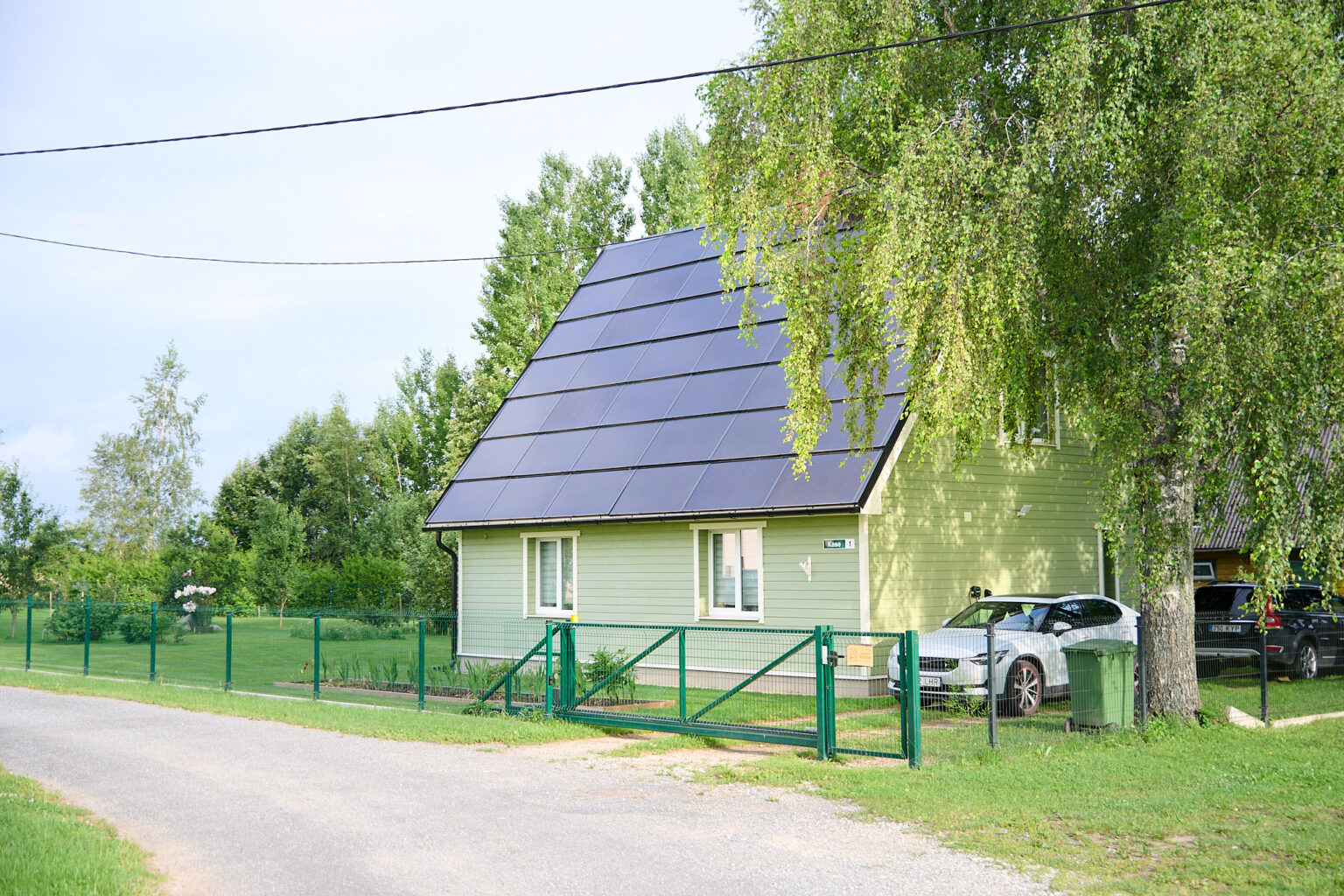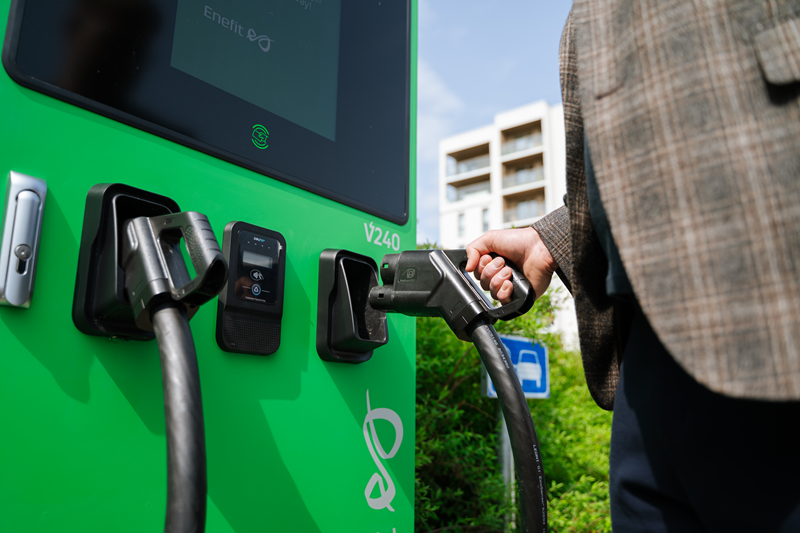Siim, a resident of Nõo, took his first step on the green journey together with his family as part of a broader home renovation project. When the time came to replace the roof of their home, the family decided that the new solution should not only be visually appealing but also practical. So they chose a solar roof for their home.
The adoption of solar energy was a deliberate and well-considered step. Alongside the roof replacement, the idea was clear – if they were going to build, they’d do it with the future in mind. ‘A regular roof never pays for itself. Solar panels, on the other hand, do – even without any support, which wasn’t available at the time,’ said Siim.
There was also a longer-term plan behind the decision. Specifically, the family was planning to buy an electric car, and the panels helped make that decision even more economically justifiable. ‘Our high annual mileage meant that an electric car was already significantly more economical than even the most fuel-efficient diesel. The solar panels improved the cost-benefit calculation even further – even when factoring in the additional cost of the roof,’ Siim explained.
Smart habits that save money
Having solar panels and an electric car has made Siim’s family’s everyday life noticeably smarter. For example, a small but useful habit has become part of their daily routine. ‘Every evening, we take a look at the next day’s market price and weather forecast. That way, we know whether to fully charge the car or do laundry at a time when electricity is especially cheap.
This routine has helped significantly reduce electricity bills, especially from spring to autumn when the panels are more productive. During the production period, our monthly electricity bills stay below one hundred euros. That’s because we consume electricity consciously – and use as much of our own generated electricity as possible.
Siim has also observed changes in his driving habits. ‘I can’t remember the last time I went to a petrol station to fill up – these days I mostly go there for coffee. The price shock every time I filled up the tank is also a thing of the past,’ said Siim.
Self-generated electricity – much more than just a low price
Siim believes that solar panels should be part of every home – especially when a household’s electricity consumption is higher in summer, for example due to air conditioning or an electric car. Transmission charges are often not taken into account in price comparisons. Even when the exchange price is low, electricity consumed through the network is more expensive than one’s own production. Panels that cover your own consumption therefore help save much more than initially expected.’
Although renewable electricity has become cheaper in the meantime and this has extended the payback period, the certainty and cleanliness of self-generation outweigh everything else for the family. ‘It’s a conscious decision. We know that our home produces clean energy – and that is a value in itself.’
Having a battery storage system provides added value
After several years of using solar panels, the next step for Siim and his family is a battery, which would cover their personal consumption at times when the sun isn’t shining.
‘If I were starting again today, I’d immediately add at least 30 kWh worth of batteries. That would cover our morning and evening consumption – the times when we need electricity but there’s no solar generation.’
In all other respects, Siim is very satisfied with the panels. ‘There’s nothing to criticise – only praise.’
If you have also thought about installing a storage system, you will find a suitable solution at Enefit – check out our selection and take the capacity of your solar park to a new level.
If you would like more information or have any other questions, we will be happy to help you. To do this, contact us and write to teenindus@enefit.ee, call 777 4040 or leave a request for a consultation on our website.



